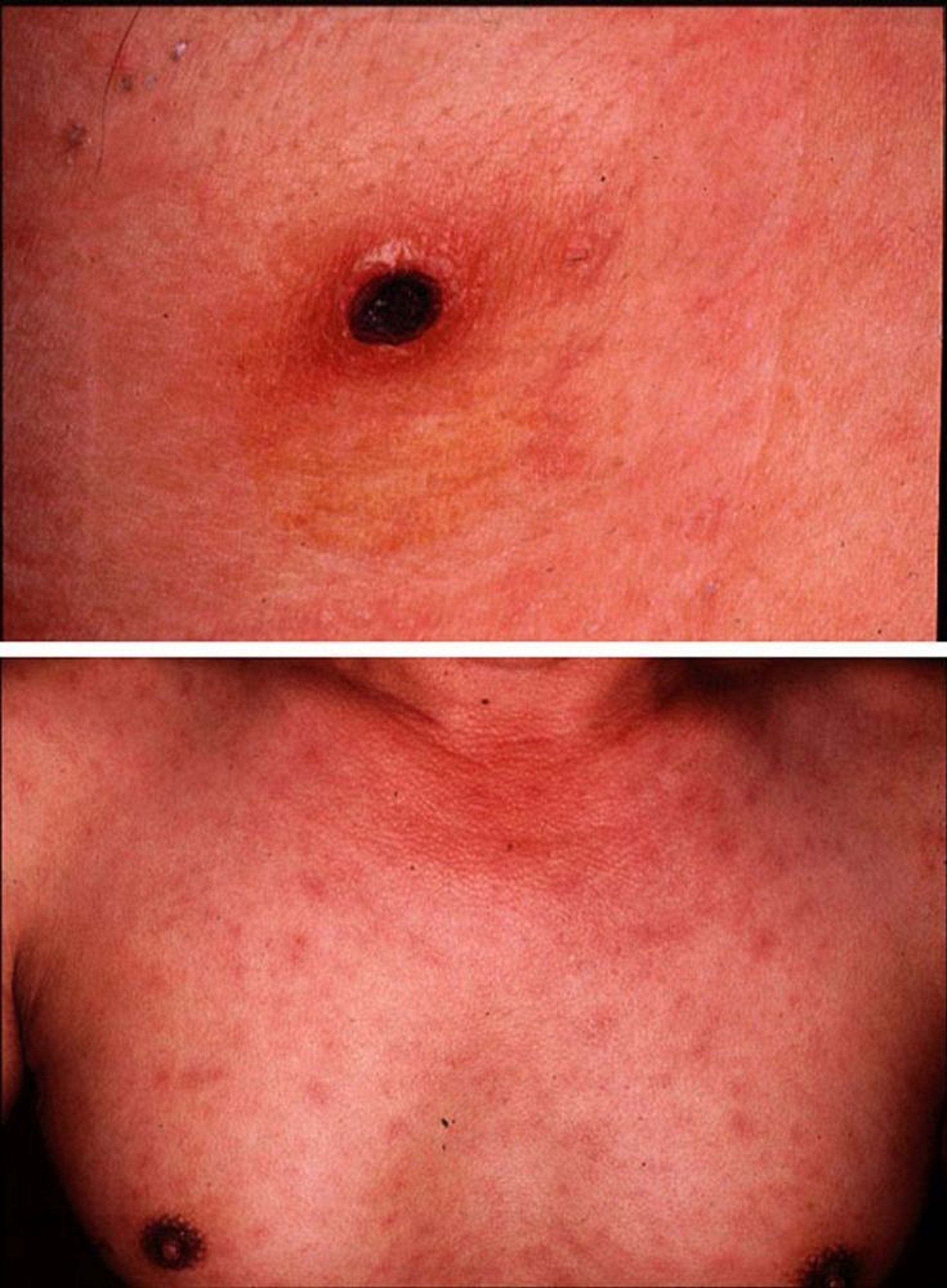Scrub typhus is related to rickettsial diseases and is caused by Orientia tsutsugamushi. It is spread by chiggers (mite larvae).
Topic Resources
People with scrub typhus have a fever, chills, and a headache, followed by a rash several days later.
To diagnose the infection, doctors test a sample of the rash and sometimes do blood tests.
Scrub typhus is treated with an antibiotic.
The bacteria that cause scrub typhus, like rickettsiae, can live only inside the cells of other organisms. Scrub typhus bacteria live in mites (the host).
Images courtesy of Yoshiki Taniguchi, MD, and the Dermatology Online Journal.
Scrub typhus occurs in Japan, Korea, China, India, and northern Australia. The disease is transmitted to people when they are bitten by a chigger (mite larva).
Symptoms of Scrub Typhus
Symptoms of scrub typhus begin suddenly, about 6 to 21 days after the bacteria enter the body. They include fever, chills, a headache, and swollen lymph nodes. A black scab may develop at the site of the chigger bite. People may have a cough during the first week of fever. A rash appears about 5 to 8 days after the fever starts.
Diagnosis of Scrub Typhus
A doctor's evaluation
Biopsy and testing of the rash
Blood tests
The diagnosis of scrub typhus is suggested by symptoms in people who have recently been to an area where scrub typhus is common (such as Central Asia, southeast Asia, South Asia, and northern Australia) and have participated in outdoor activities, such as camping or visiting farms, which could expose them to chigger bites.
To confirm the diagnosis, doctors may do an immunofluorescence assay, which uses a sample from the rash (biopsy). Or they may use the polymerase chain reaction (PCR) technique to enable them to detect the bacteria more rapidly.
Doctors may do blood tests that detect antibodies to the bacteria. However, doing the test once is not enough. The test must be repeated 1 to 3 weeks later to check for an increase in the antibody level. Thus, these tests do not help doctors diagnose the infection immediately after someone becomes ill but can help confirm the diagnosis later.
Treatment of Scrub Typhus
An antibiotic
Treatment of scrub typhus usually consists of doxycycline (a type of antibiotic called a tetracycline), taken by mouth, People take this antibiotic until they improve and have had no fever for 48 hours, but they must take it for at least 7 days. With treatment, people recover quickly.Treatment of scrub typhus usually consists of doxycycline (a type of antibiotic called a tetracycline), taken by mouth, People take this antibiotic until they improve and have had no fever for 48 hours, but they must take it for at least 7 days. With treatment, people recover quickly.
Although some tetracyclines taken for longer than 10 days can cause tooth staining in children younger than 8 years old, short courses (5 to 10 days) of doxycycline in children of all ages is recommended by the American Academy of Pediatrics and other experts and can be used without causing tooth staining or weakening of tooth enamel (see also Although some tetracyclines taken for longer than 10 days can cause tooth staining in children younger than 8 years old, short courses (5 to 10 days) of doxycycline in children of all ages is recommended by the American Academy of Pediatrics and other experts and can be used without causing tooth staining or weakening of tooth enamel (see alsoCenters for Disease Control and Prevention (CDC): Research on doxycycline and tooth staining).
Prevention of Scrub Typhus
Prevention involves clearing brush and spraying infested areas with insecticides to eliminate or decrease the mite population.
If people are likely to come in contact with the chiggers, they should use insect repellents such as DEET (diethyltoluamide).


